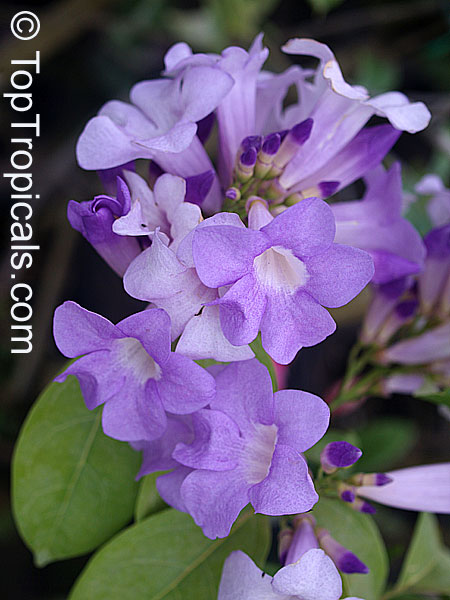Mansoa alliacea - Garlic Vine
by Alex Butova, the Witch of Herbs and Cats
Alexandra Butova is our columnist, journalist, and photographer, living in Riga, Latvia. She has has been with TopTropicals since Day One (2002), writing about magic plants, travel, and of course cats - from the CatNation she belongs to. Alex is in charge of TopTropicals.ru website.
How to get rid of bad luck:
Mansoa alliacea - Garlic Vine
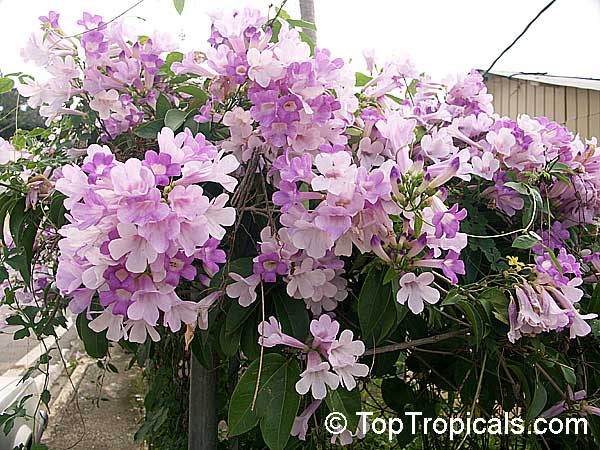
Are you a vampire? If not, then this is your Plant!
Mansoa alliacea, orGarlic Vine, is a truly amazing plant. There are two special features that make it so unique.
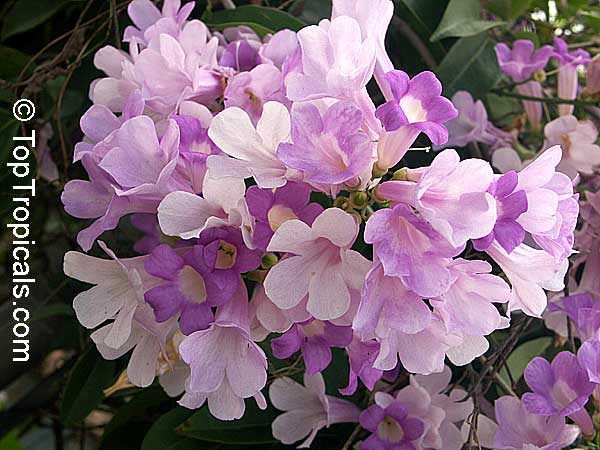
Tri-color flowers
First, the blooms.
Flowers start off deep lavender with white throat and change to a lighter shade of lavender with age. Eventually fading to almost white, andyou will see three different color of flowers at the same time on the plant. It's fantastic! The vine blooms profusely twice a year: in Fall-Winter, and in Spring, although it may also have some flowers on and off throughout the year.
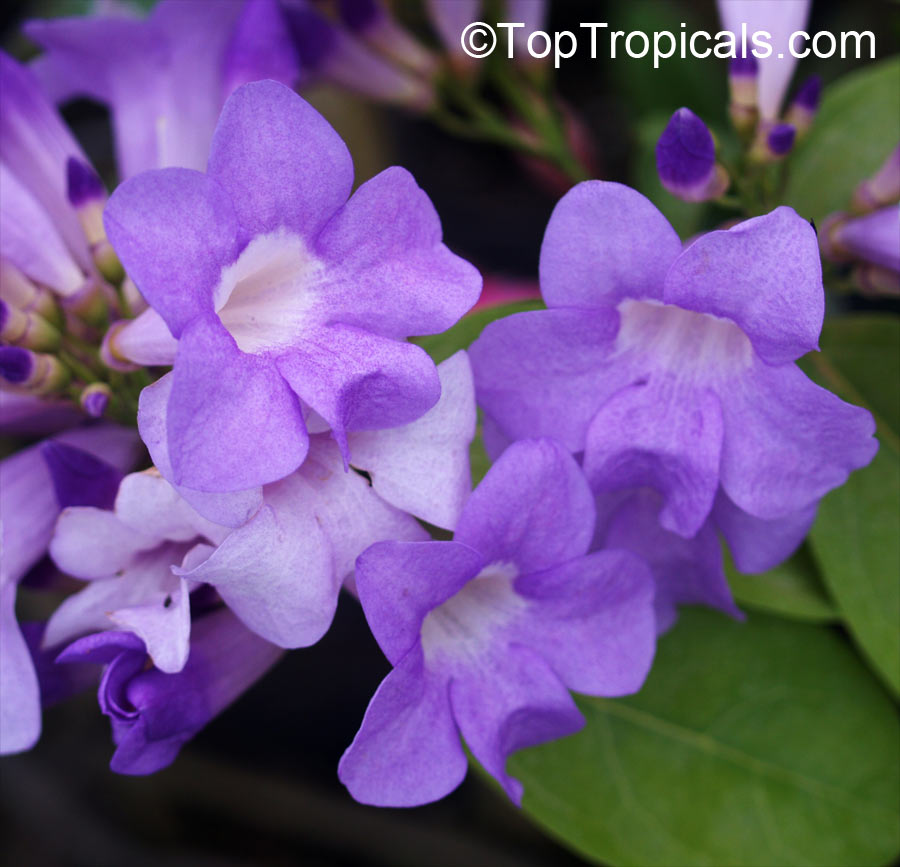
Garlic... better than garlic!
Secondly, the small of the leaves makes it a conversation piece: crushed leaves smell like garlic, although of course the plant is not related to the common edible onion or garlic at all. Usually the odor is noticed when its leaves are crushed or when you prune the branches.
The heavy clusters of flowers do not emit any scent at all, so no worry that the garden or home will heavily smell of garlic when this plant blooms!
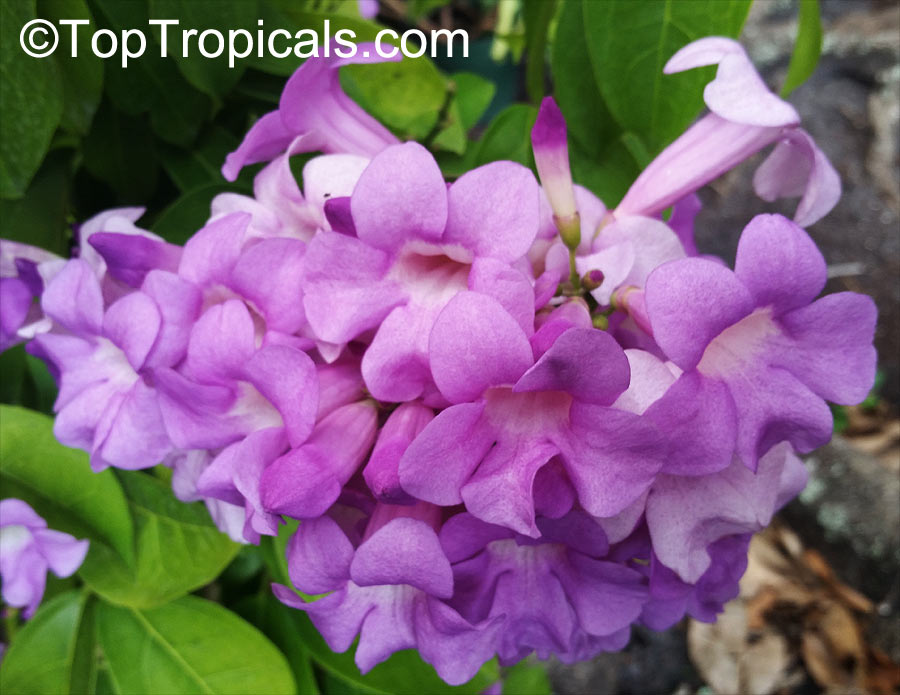
In the garden
Mansoa alliacea is a species of tropicallianain the familyBignoniaceae. It is native to Northern South America, and has spread toCentral Americaand Brasil. Among thepeoplesof theAmazon rainforestit is known asAjo Sacha, a Spanish-Quechua which means "forest garlic" or "wild garlic". It has been exported overseas, and grows in the favorable climates ofWest Indies, Southern Africa,Thailand,and India.
Garlic Vineis an ornamental evergreen plant, andcan be described as either a shrub or a vine because it produces numerous woody stems from the root, and grows 6-8ft tall to form a shrub-like, fountain appearance. In the wild this a semi-woody vine attaches itself around the trunk of a large tree for support as it climbs skywards to reach for sunlight. It produces bright green leaves up to 6" long. The terminal leaflet of this plant is often modified into a tendril that helps the vine to cling onto a support.

Garlic vine is a good choice for gardens located in warm tropical and subtropical climates. Thisvine has amoderate growth rate, so don't worry, it won't become an unruly resident in your garden. It can be grown as a specimen flowering bush if trimmed, but is most attractive on supports, fences, trellises, pergolas, etc. It is a vigorous grower and establishes quickly. Its compact habitat and pretty continuos flowers make it a popular ornamental plant.
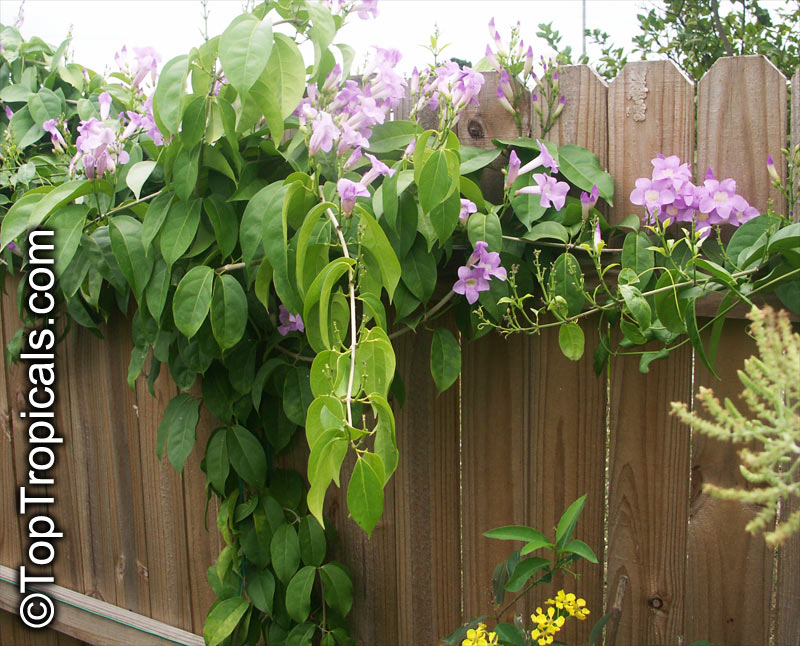
Uses
Garlic vine is used as substitute for garlic in food. Ajo sacha is widely used by many of the indigenous peoples of the Amazon, with almost all parts of the plant being used. The plant has also become a popular treatment in modern herbal medicine in South America. All parts of the plant - roots, stems and leaves, are used medicinally, they are widely used for treating arthritis, rheumatism, body aches and pain, and muscle aches, injuries and pain.
Modern scientific research has shown that this plant really contains a number of medically active compounds. These include several of the main sulphur compounds that garlic contains, including aliin and allyl sulphides. It is these compounds which are responsible for the garlic-like odor and taste. These compounds are known to lower blood-cholesterol levels and inhibit absorption of cholesterol in the intestines. The wood of the vine is reported to contain two lapachone chemicals which are well known plant chemicals of the Bignoniaceae family and documented with anticancer and antimicrobial actions.
The plant has also been reported with antimicrobial actions against fungi, plant viruses, and bacteria, which may help explain its long standing use for colds, flu, pneumonia and other upper respiratory infections. Garlic vine is also effective as a mosquito and snake repellent.

The plant is said to help get rid of bad luck and is a favorite with hunters. Some Amazon natives offer their dogs a brew of this botanical to ensure success during the hunt. Up until now, most consider the plant to be magical or spiritual and they hang bunches of the leaves around their home for good luck or in order to drive away evil spirits. The leaves are burned as smudge over people or in houses to 'cleanse the spirit' or to bring good luck It said that this houseplant pushes out all the bad luck from the house.
Nevertheless in fact, the plant perfectly serves a two in one purpose of air purification and treatments.
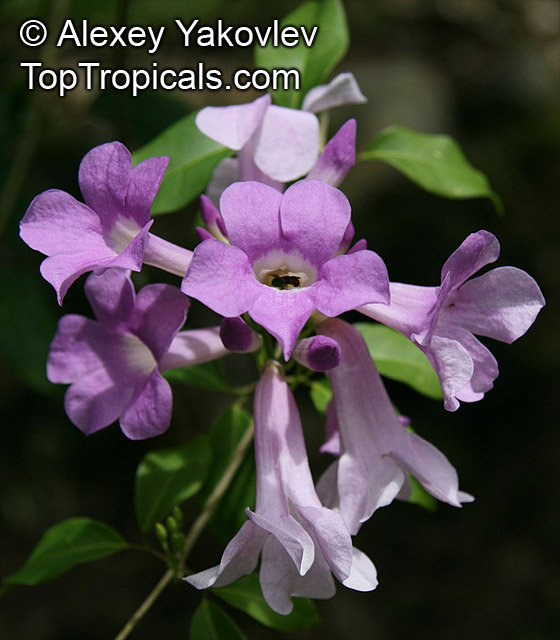
Cultivation
Mansoa alliaceacan be grown in containers and should be trimmed after the flowers are gone. Plants in 1-3 gal pots can be maintained under 3 ft; one way to keep them within reasonable size is to train new growth around an inverted hoop of rattan cane or wire. When grown indoors,it need bright light and some direct sunlight to flower. Normal room temperature is great for this vineall year round.
Outdoors, plant it in full sun. Although the plant tolerates shade, positioning in a full shade location should be avoided to support spectacular flowering. The lack of sunlightis leading to the development of foliage at the expense of flowering. It likes warm temperatures in summer and cooler in winter. When grown outdoors, it is hardy to upper 30's, avoid freezing temperatures, although establiched plants survive light frist for a short time.
Like many other flowering vines, Garlic vine should not be overly pruned as flower buds appear on new growth. Many gardeners make this mistake by pruning away the vines to keep new growth and as a result, plants refuse to produce flowers.
A bit of proper care and Garlic vine, bearing beautiful lavender bell shaped flowers, will be one of the most rewarding flowering vines that you can grow - if you are not a vampire, of course!
RECOMMENDED FERTILIZERS:
SUNSHINE Megaflor - Bloom Nutrition Booster
Tropical Allure - Smart-Release Booster
